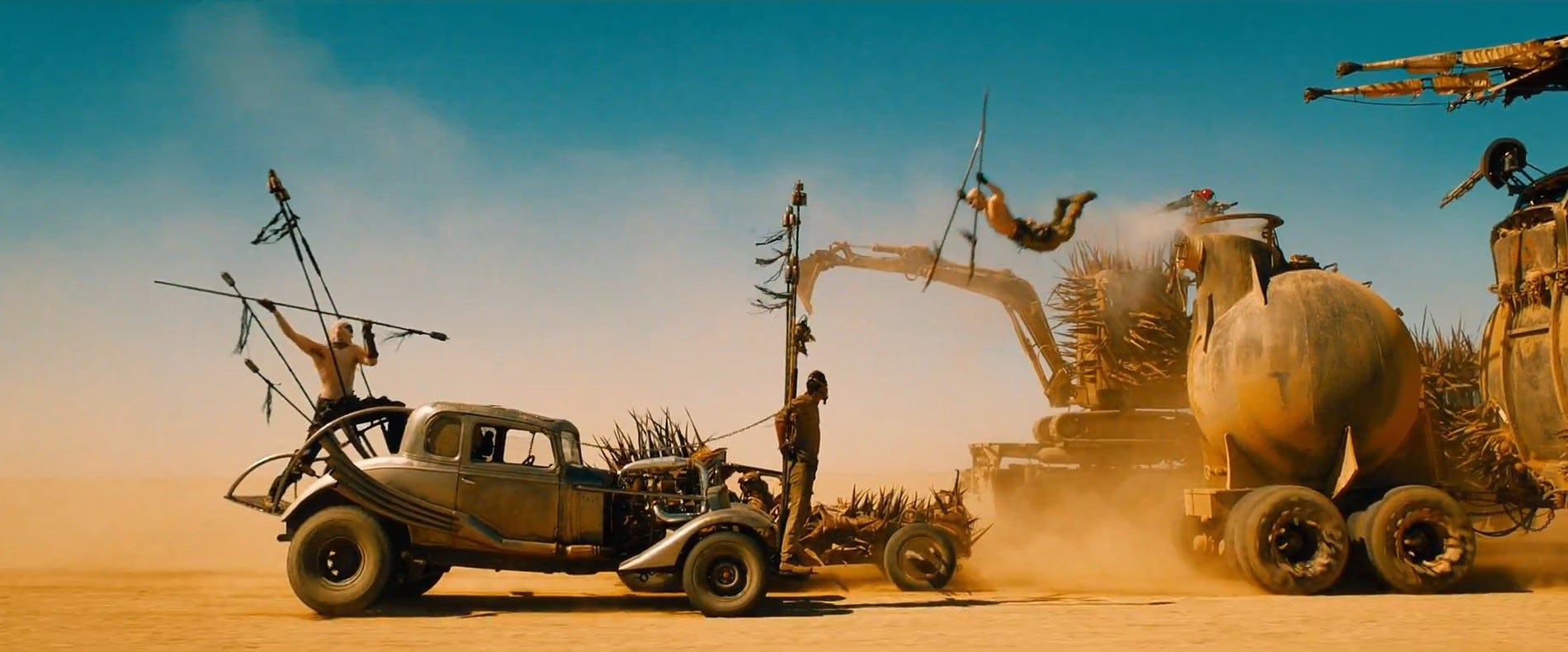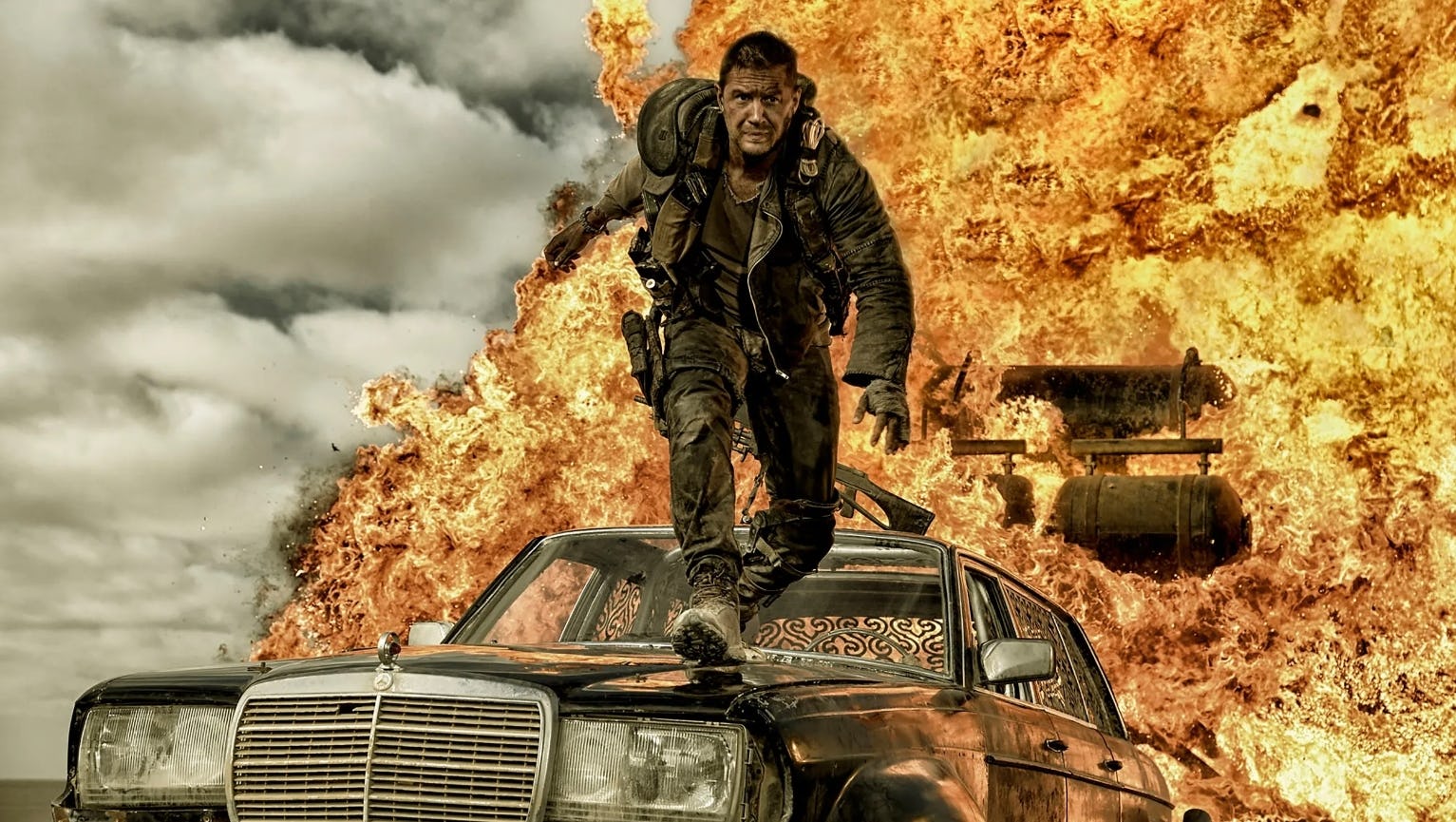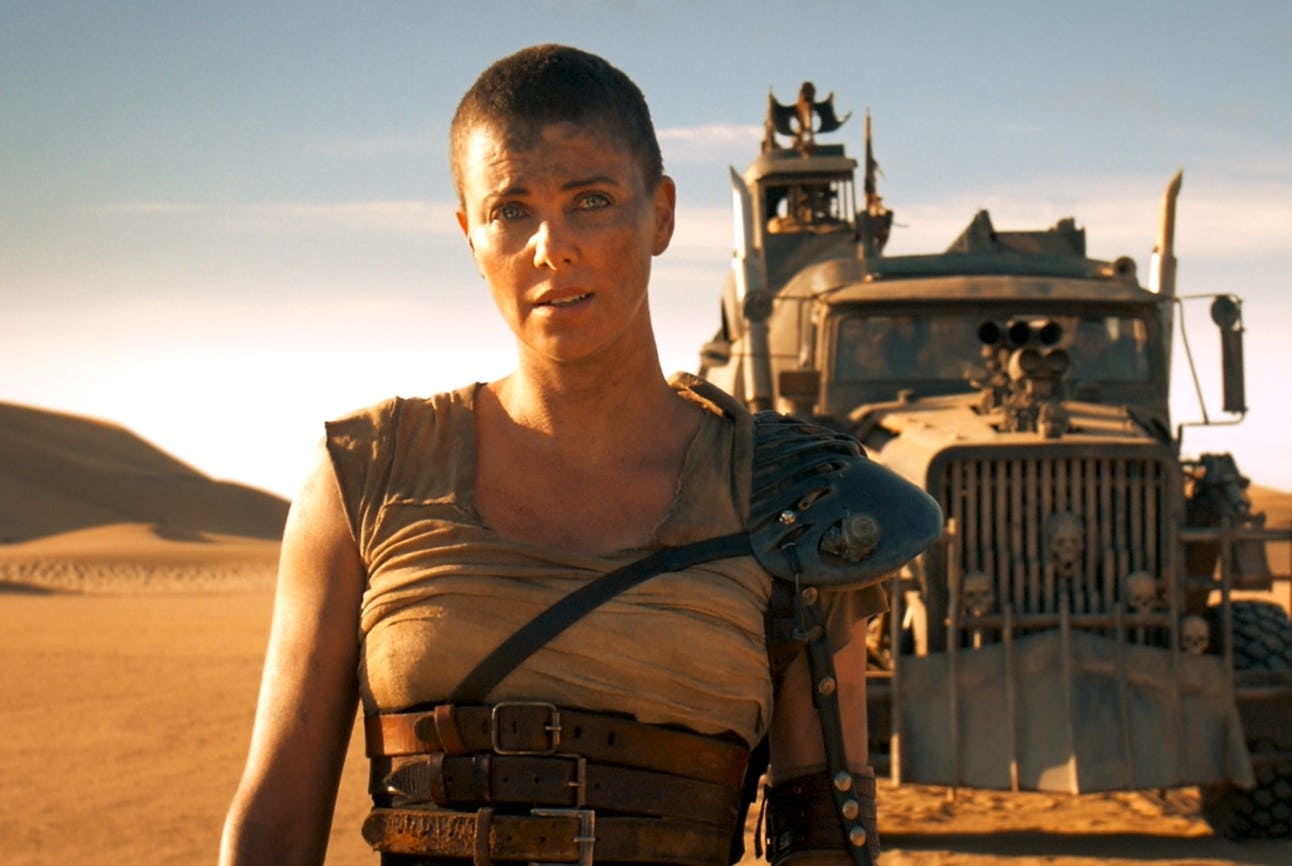
The three highest-grossing films of 2015 weren’t necessarily visual marvels. Star Wars: The Force Awakens was full of sweeping gestures, but relied on familiar, nostalgic cues to maintain interest. Jurassic World was all but doomed to exist in the gargantuan shadow of the original film, while Avengers: Age of Ultron sought an overcrowded palette that reeked of post-production overhaul and franchising obligations. This can be typical for the blockbuster — so much sizzle with very little steak.
And then there’s Mad Max: Fury Road, a film that lurks much farther down the list (at #21, it didn’t even beat the fourth Hunger Games effort or the generic thrills of San Andreas). It's spot proves that maybe we don’t deserve a film that marries such competent technique with unabashed spectacle, and that the true wasteland isn’t what's on screen, but in the rest of the theater around us.
The plot of Fury Road is simple: Furiosa, a high-ranking officer serving the warlord Immortan Joe, seeks to escape his clutches and return to her fabled birth home, all while transporting a group of Joe’s young “wives.” Along the way, she runs into Max, a weary figure haunted by his past and a ghost of the immense desert the world has become. Max, previously captured by Joe’s gaggle of psychotic soldiers, doesn’t seek revenge, only survival. But he eventually joins up with Furiosa to outrun and then outmatch Joe’s army.
Little of the narrative is told with actual dialogue. Director George Miller, returning to the series for the first time in almost three decades, relays most of his information in a flurry of sound and visual whips. There are emotional bits and scenes where characters are so broken down they can do little else but bare their souls, but they tend to come second to the story’s inexorable drive. Even when it’s not roaring, the engine is constantly humming in the background. Many films are about surviving relative extinction, but few force the audience to pick up and go along with it like Fury Road.

This isn’t necessarily new for Miller. Though the director became famous off the original Mad Max trilogy, a beautifully deranged series of films that leaves you wondering how every stuntman didn’t end up in a coffin, the director has always been attuned to how one can tell a story through mood and pulsating cinematography. Even his animated Happy Feet films thrive on their rhythmic bump.
By the time Fury Road came out, Miller was 70, but he’d lost none of his step. You can argue over the quality of one Mad Max compared to another (Fury Road does embrace melding digital technology with in-camera stunt work, so some of The Road Warrior’s breakneck charm is missing). But one can’t deny that he retains as much vitality as he’s ever had. The nitro-fuel is in his DNA.
A film like this could leave even its leading actors as bit players, lost in the process like they’d be in a sandstorm, and more people have probably commented on the scene that introduces the flaming guitar-playing gimp-man than on any amount of pathos Fury Road holds. But Miller does so much with expression and body language. Charlize Theron’s Furiosa holds a well of hurt and righteous anger behind her eyes, while Tom Hardy’s weary Max is both the agitated straight man and a comic ragdoll. Replacing Mel Gibson in the role was a gamble (and probably a necessity, thanks to the actor’s age and hyper-publicized scandals), but Hardy retains a lot of Gibson’s physical grace, especially when he’s taking his dusty lumps like a silent film-era performer.

That Fury Road would eventually underperform at the box office isn’t a surprise, even if it shared in 2015’s theme of resurrecting series once lost to your childhood. But seeing Harrison Ford as Han Solo, or watching the Tyrannosaurus Rex stomp into frame again was the cinematic equivalent of comfort food, a testament not to pushing a franchise forward, but to resting in the sensations of the past.
Fury Road isn’t as reassuring. It’s fixated on outdoing itself, adding onto sequences that eventually feel like a Rube Goldberg assortment of blood and gasoline. And while its ending is satisfying, by the time Max wanders away into the crowd and Furiosa tends to Joe’s former empire, there’s no sense of a return to normalcy. The world hasn’t been saved, but a pocket of it is on a path to restoration. Mad Max: Fury Road didn’t rescue Hollywood; it just showed what happens when you step on the gas a little bit.







